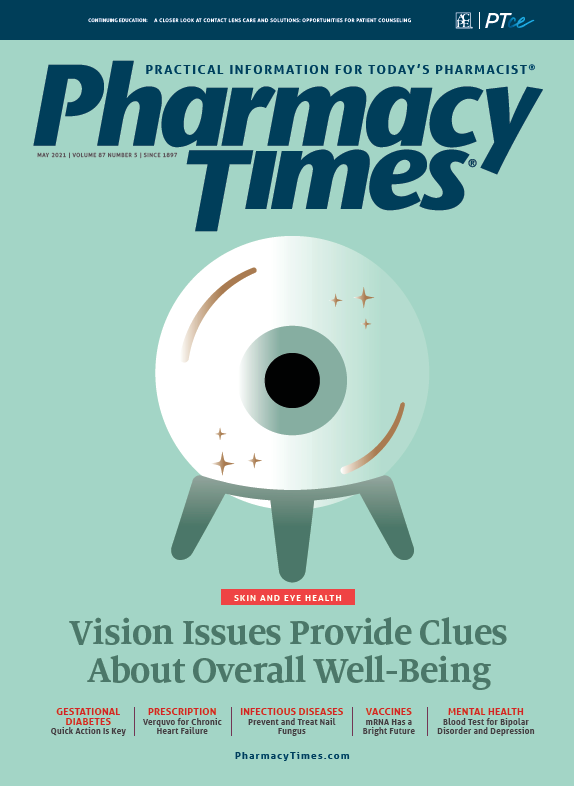Publication
Article
Pharmacy Times
Clinical Pharmacology Update: Verquvo From Merck and Co, Inc
Author(s):
The FDA has approved Verquvo (vericiguat; Merck) tablets for adults with chronic heart failure (HF). The medication is indicated to reduce the risk of cardiovascular (CV) death and HF hospitalization in adults with symptomatic chronic HF and ejection fraction (EF) less than 45% who received outpatient intravenous (IV) diuretics for HF or were hospitalized for HF.1 Approximately 6.2 million Americans 20 years and older have been diagnosed with HF, and approximately half have HF with reduced EF.2
Pharmacology and Pharmacokinetics
Verquvo is a soluble guanylate cyclase (sGC) stimulator, which is a significant enzyme in the nitric oxide (NO) signaling pathway. The binding of NO to sGC catalyzes the synthesis of intracellular cyclic guanosine monophosphate (cGMP), which is involved in cardiac contractility, cardiac remodeling, and vascular tone regulation. HF is associated with decreased sGC activity and impaired NO synthesis, possibly contributing to myocardial and vascular dysfunction. Stimulation of sGC increases intracellular cGMP, which results in smooth muscle relaxation and vasodilation. Verquvo reaches steady-state plasma concentrations after approximately 6 days of administration. It displays an elimination half-life of 30 hours in patients
with HF.1
Dosage and Administration
The recommended starting dose of Verquvo is 2.5 mg orally once daily with food. The dose should be doubled approximately every 2 weeks until the target maintenance dose of 10 mg once daily is reached, as tolerated by the patient. The tablet may be crushed and mixed with water immediately prior to administration. It is supplied as 2.5-, 5-, and 10-mg tablets.1
Clinical Trials
Verquvo was evaluated in a double-blind, event-driven, multicenter, parallel-group, placebo-controlled, randomized trial in 5050 adults with symptomatic chronic HF (New York Heart Association class II-IV) and left ventricular EF less than 45% who had experienced a worsening HF event. The worsening HF event was defined as a hospitalization for HF within 6 months before randomization or the use of outpatient IV diuretics to treat HF within 3 months before randomization.
Participants were receiving the standard of care for HF prior to the start of the trial. They continued treatment with their baseline medications, with 93% of participants using a β-blocker, 73% using an angiotensin-converting enzyme inhibitor or angiotensin II receptor blocker, 70% using a mineralocorticoid receptor antagonist (MRA), and 15% using a combination of an angiotensin receptor and neprilysin inhibitor. Twenty-eight percent of participants had an implantable cardiac defibrillator, and 15% had a biventricular pacemaker. Ninety-one percent of participants were using 2 or more HF medications (β-blocker, any renin-angiotensin system inhibitor or MRA), and 60% of participants were using all 3 of the HF medications. Ivabradine was used in 6% of participants, and 3% were using a sodium-glucose cotransporter-2 inhibitor. Participants were randomized to receive either a placebo or Verquvo 2.5 mg once daily. The dose was doubled at approximately 2-week intervals to the target dose of 10 mg once daily, as tolerated, and the placebo doses were titrated similarly. Ninety percent of participants in both groups were receiving the 10-mg target dose after approximately 1 year.
The primary end point was a composite of the time to first event of CV death or HF hospitalization. Verquvo was found to be superior to the placebo in reducing the risk of CV death or HF hospitalization based on a time-to-event analysis.
Over the course of the study, there was a 4.2% annualized absolute risk reduction with Verquvo compared with the placebo.1,2
Contraindications, Warnings, and Precautions
Verquvo carries a boxed warning that the medication may cause fetal harm when administered during pregnancy. All women of reproductive potential should have a negative pregnancy test before beginning Verquvo and use effective forms of contraception during treatment, which should be continued for 1 month after Verquvo is discontinued.
The use of Verquvo is contraindicated in patients who are taking additional sGC stimulators. Its use is also contraindicated during pregnancy. Verquvo should not be used concomitantly with phosphodiesterase-5 inhibitors, as this combination increases the potential for hypotension.
Verquvo should not be used during breastfeeding. The most common adverse reactions are anemia and hypotension.1
Monica Holmberg, PharmD, BCPS, is a pharmacist and Pharmacy Times® contributor.
REFERENCES
- Verquvo. Prescribing information. Merck; 2021. Accessed February 25, 2021. https://www.merck.com/product/usa/pi_circulars/v/verquvo/verquvo_pi.pdf
- Merck announces US FDA approval of Verquvo (vericiguat). News release. Merck. January 20, 2021. Accessed February 25, 2021. https://www.merck.com/news/merck-announces-u-s-fda-approval-of-verquvo-vericiguat/






